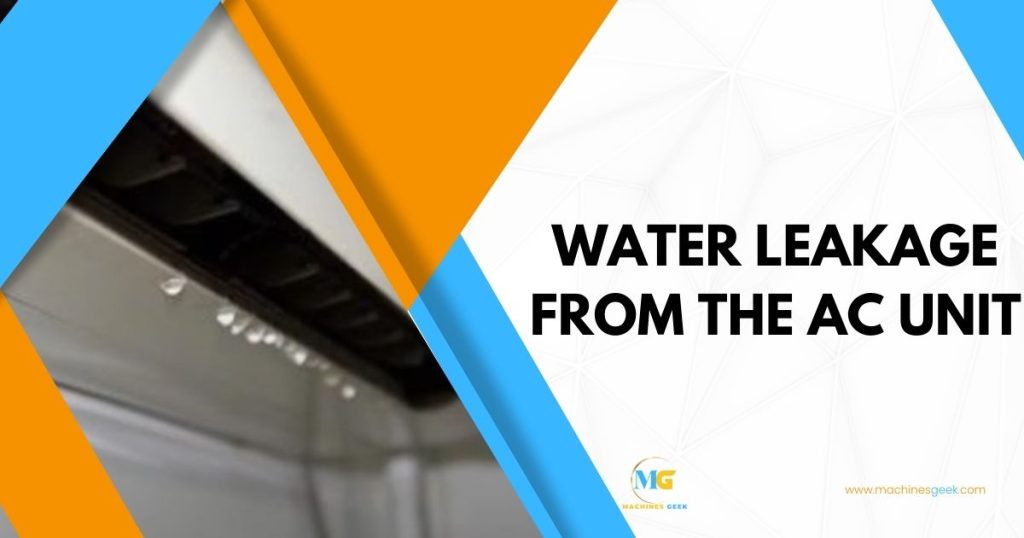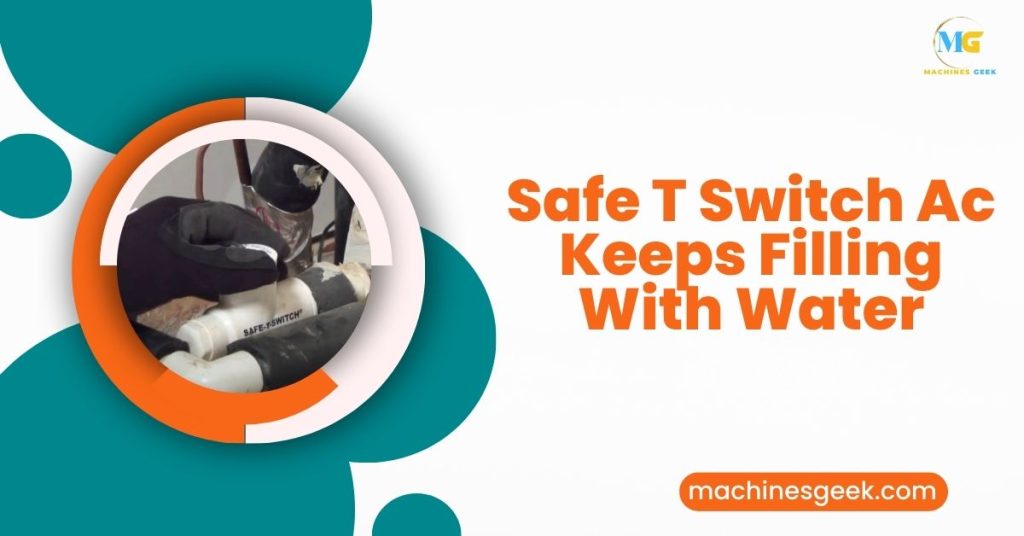A Safe T Switch AC unit that keeps filling with water may be experiencing a clogged drain line or a faulty float switch. This can cause water to accumulate instead of draining properly, leading to potential damage to the system.
It is important to address this issue promptly to prevent further complications and ensure the efficient functioning of the AC unit. A Safe T Switch AC unit is designed to prevent water damage by automatically shutting off the system when a drain pan becomes full.
However, if you notice that your Safe T Switch AC unit is continuously filling with water, it is a sign of an underlying problem. This issue can arise due to a clogged drain line or a malfunctioning float switch, preventing the water from draining properly.
By understanding the possible causes, you can take appropriate measures to rectify the situation and avoid any potential damage to your AC unit. We will delve into the reasons why a Safe T Switch AC keeps filling with water and discuss the necessary steps to resolve this issue effectively.
Step-by-step Guide To Clearing A Clogged Condensate Drain Line
Checking for clogs at the condensate drain line exit is the first step in clearing a clogged drain line. Look for any obstructions or debris that might be blocking the flow of water. Once you’ve identified the clog, you can use a wet/dry vacuum to clear it. Place the vacuum at the end of the drain line and turn it on to suction out the clog.
Another effective method to clear a clogged condensate drain line is by flushing it with a mixture of vinegar and water. Mix equal parts vinegar and water and pour it into the drain line. Allow the mixture to sit for a few minutes and then flush it out with clean water. This can help dissolve any buildup or blockage in the drain line.
Repairing Or Replacing A Faulty Condensate Pump

- Water leakage from the AC unit, especially around the base
- Excess moisture or humidity in the air
- Persistent musty odor in the vicinity of the AC unit
- Reduced cooling performance or frequent cycling of the unit
- Turn off the power supply and water source to the AC unit
- Locate the condensate pump, typically near the air handler or ductwork
- Disconnect the electrical wiring and tubing connected to the pump
- Remove any mounting brackets or screws holding the pump in place
- Select a suitable replacement pump based on the AC unit’s requirements
- Mount the new pump securely in the same location as the old one
- Connect the electrical wiring and tubing to the new pump
- Ensure all connections are tight and secure, and check for any leaks
- Restore the power supply and water source, and test the AC unit
Fixing A Malfunctioning Float Switch
To address the issue of your Safe T Switch AC continuously filling with water, it is important to first assess whether the float switch is the cause of the problem:
1. Determine if the float switch is the cause of the water filling issue by checking if it is stuck or not functioning properly. A malfunctioning float switch can cause the condensate pan to overflow.
2. Clean the float switch thoroughly to remove any dirt or debris that may be causing it to stick. If cleaning does not resolve the issue, consider replacing the float switch with a new one.
3. Test the float switch to ensure it is functioning correctly by manually engaging and disengaging it. This can be done by gently lifting and lowering the switch. If it does not operate smoothly or fails to turn off the water flow when lifted, it may need to be replaced.
By following these steps, you can effectively troubleshoot and resolve the problem of your Safe T Switch AC filling with water.
Regular Maintenance And Cleaning Of Condensate Drain Line
Regular maintenance and cleaning of the condensate drain line is essential to prevent issues like the safe T switch AC filling with water. Schedule routine inspections and professional cleanings to ensure the drain line remains clear and free from any obstructions.
This will help in avoiding water overflow and potential damage to the HVAC system. It is also advisable to use a condensate drain line cleaning solution periodically to keep the line clean and running smoothly. This solution breaks down any buildup or debris in the drain line, preventing clogs and blockages.
By investing time and effort into the regular maintenance of the condensate drain line, you can ensure the safe T switch AC operates efficiently and avoids any water-related problems.
Installing A Safety Overflow Pan
A safety overflow pan is an essential component that helps protect your Safe T Switch AC from water overflow and potential damage. It is designed to catch any excess water that may collect around your AC unit, preventing leaks and potential water damage to your property.
Here are the steps to install a safety overflow pan for your Safe T Switch AC:
- First, ensure that you have all the necessary tools and materials, including the safety overflow pan itself, a level, a drill, and screws.
- Position the safety overflow pan beneath the AC unit, making sure it is centered and level.
- Using a drill, align the screw holes of the pan with the mounting holes in the AC unit.
- Securely fasten the safety overflow pan to the AC unit by carefully screwing in the screws.
- Double-check that the pan is securely mounted and leveled.
- Finally, test the safety overflow pan by pouring a small amount of water into it. Ensure that the water properly drains away without overflowing.
By installing a safety overflow pan for your Safe T Switch AC, you can have peace of mind knowing that your unit is protected from water overflow, minimizing the risk of damage and costly repairs.
Using A Condensate Drain Line Safety Switch
Using a condensate drain line safety switch is an essential step in preventing water overflow and damage to your AC unit. This device is installed on the condensate drain line to detect water build-up and shut off the unit before any flooding occurs. The installation process for a safety switch is straightforward and can be done by a professional HVAC technician.
There are several benefits to using a safety switch. Firstly, it provides an early warning system, alerting you to any potential issues with your condensate drain line. Secondly, it helps to avoid water damage to your AC unit and surrounding areas, such as ceilings, walls, and flooring.
Additionally, it can prevent mold and mildew growth caused by excessive moisture accumulation. Lastly, a safety switch ensures the efficient operation of your AC system by reducing the risk of clogged drain lines and other related problems.
Frequently Asked Questions
Why Does My Safe T Switch Ac Keep Filling With Water?
Your Safe T Switch AC may be filling with water due to a clogged condensate drain line, which can cause water to back up and overflow into the switch.
How Can I Prevent My Safe T Switch Ac From Filling With Water?
To prevent your Safe T Switch AC from filling with water, regularly clean and maintain the condensate drain line to avoid clogs and ensure proper water drainage.
Is A Constantly Filling Safe T Switch Ac Dangerous?
A constantly filling Safe T Switch AC can be dangerous as it indicates a potential issue with the condensate drain line, which can lead to water damage and mold growth if not addressed promptly.
Conclusion
With the frequent issue of a Safe T Switch AC filling with water, it’s important to address the root cause and take necessary steps for prevention. Regular maintenance, such as cleaning the drain line and checking for leaks, can significantly reduce the chances of this problem occurring.
Remember to schedule professional inspections to identify any underlying issues and minimize potential damage to your AC unit. By being proactive, you can ensure your Safe T Switch AC operates efficiently and reliably, without the risk of water accumulation.








